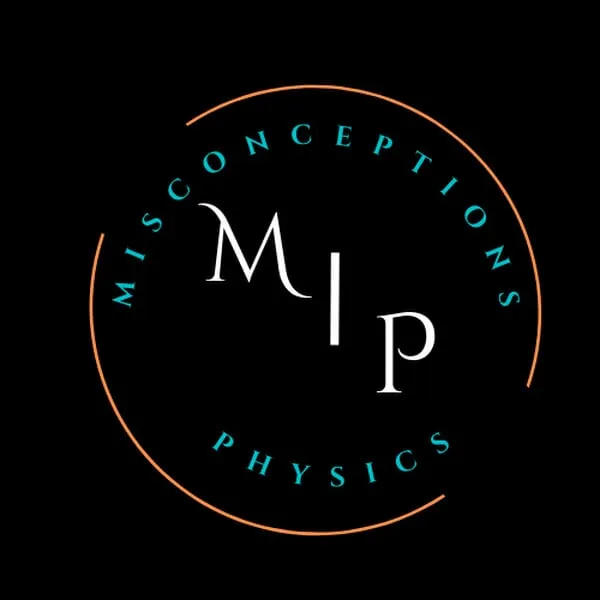One Concept / Day
I’m excited to launch a new Revision Series called "One Concept Per Day," where I will post Daily Revision Questions on a specific concept from the IBDP Physics curriculum. This structured approach will help students reinforce their understanding and improve their exam performance.
For the Question paper, Join my Whatsapp group: https://rebrand.ly/ibphysicswithrao
Data Analysis
✅ Finding Absolute Uncertainities using Propogation of Errors
✅ Drawing line of best fit and Identifying Systematic error from the graph
✅Converting Absolute uncertainity to Percentage uncertainity.
Projectile Motion
✅ Finding velocity components using a trajectory graph
✅Determining speed of a particle thrown from a cliff at an angle
✅Calculating horizontal distance where the particle lands when launched from a cliff
Electric Circuits
✅ Impact of adding a resistor on current and potential drop in a circuit
✅ Understanding short circuit and open circuit conditions in electrical circuits
✅ Determining the EMF of a cell using a voltage-current graph
Ideal Gases
✅ Internal energy vs. temperature – Key differences
✅ Maxwell’s velocity distribution – Understanding molecular speeds
✅ Work in an isothermal process – Energy changes at constant temperature
Interference and Diffraction
✅ Coherence in interference – Why phase consistency matters
✅ Intensity patterns – Sketching for interference & single-slit diffraction
✅ Angular separation & wavelength – Calculations in interference experiments
Conservation of Momentum in Nuclear Physics
✅ Conservation of Momentum – Definition & when it doesn’t apply
✅ Nuclear Reactions – Balancing equations
✅ Momentum in Nuclear Decay – Direction of particles
HR Diagrams and their Interpretation
✅ Identifying stars using HR diagram – Main sequence, Red giants and White Dwarfs ✅ Evolution of a star using HR diagram – Evolution, Nuclear Reactions.
✅ Parameter Estimation using HR diagrams – Size, distance, Temperature, Luminosity calculations
Magnetic Forces
✅ Identifying Magnetic fields – Parallel, Single and Circular current carrying wire
✅ Force between two conductors – Usage for left hand rule
✅ Finding Current due to Charge motion – Discrete particles and its deviation
Specific Heat
✅ Definition of Specific Heat – Understanding its significance in thermodynamics
✅ Specific Heat in Gases – Differences between two types and their applications
✅ Heat & Electrical Resistance – Using specific heat to find resistance
I-V Characteristics
✅ Finding Resistance – Using voltage & current rating of a lamp.
✅ Effect of a Voltmeter – How a non-ideal voltmeter alters current flow.
✅ I-V Characteristics – Determining resistance from a current-voltage graph.
✅ Linear vs. Non-Linear Elements – Comparing current-voltage behavior in circuits.
Reflection and Refraction
✅ Finding Refraction Angle – Applying Snell’s Law to determine refracting angle.
✅ Optical Fibers & TIR – Understanding conditions for total internal reflection.
✅ Ultrasonic Distance Measurement – Using wave reflections to calculate distance.
Rutherford's Alpha particle Scattering
✅ Conservation of Momentum – Momentum transfer during alpha particle deflections.
✅ Vector Addition – Applying vector analysis to predict particle trajectories.
✅ Energy Conservation – Understanding energy transformations in scattering events. ✅ Coulombian Force – Exploring electrostatic forces in nuclear interactions.
Bohr's Atomic Model
✅ Reasoning the contradiction in classical physics using stationary orbits
✅ Understanding Bohr’s postulates and their significance
✅ Finding the longest wavelength in the visible spectrum using Bohr’s model
✅ Angular momentum quantization condition and its implications
Binding Energy Calculations
✅ Energy release in fission & fusion – Using binding energy per nucleon
✅ Calculating number of atoms – From nuclear activity
✅ Binding energy & stability – Understanding isotope stability
Coulomb's Laws
✅ Force vs. 1/r² graph – Understanding the inverse-square law
✅ Systematic vs. Random Error – Differentiating errors in data
✅ Finding charge magnitude via graphical transformation
Gravitational Field and Potential:
✅ Gravitational Field from Potential – Using potential-distance graphs
✅ Kepler’s Laws – Understanding planetary motion
✅ Escape & Orbital Velocity – Applying field equations
✅ Weightlessness – Exploring its concept in space
Basic Kinematics:
✅ Finding Speed & Displacement – Applying kinematic equations
✅ Police-Thief Problem – Solving relative motion between vehicles
✅ v-t Graphs & Displacement – Interpreting motion graphs
✅ Deriving Equations of Motion – Strengthening fundamentals
✅ Estimating Camera Shutter Speed – Using a ball drop experiment
Free Body Diagrams ( FBDs)
✅ Translational & Rotational Equilibrium – Understanding net force and torque
✅ Balloon in Air – Analyzing forces when ascending and when tied to the ground
✅ Motion on an Inclined Plane – Resolving forces for objects moving up or down
Collisions and Circular Motion
✅ Ball hits wall – momentum and energy transfer
✅ Car in a vertical loop – circular motion forces
✅ Inelastic collision – friction from stopping distance

Learn, solve, and succeed with IBPhysicsWithRao!
© 2024 IB Physics with Rao. All Rights Reserved.